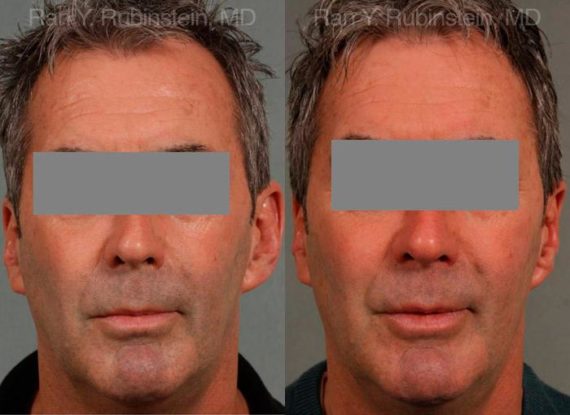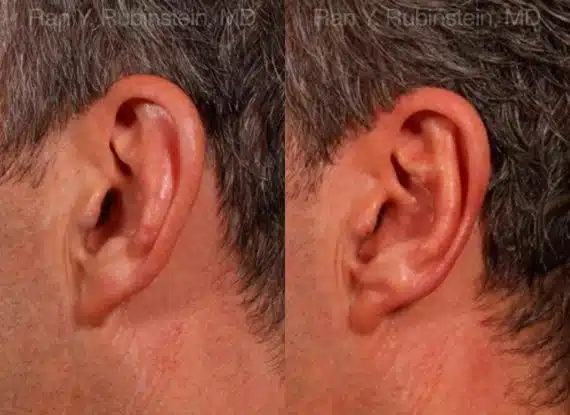Thinking about reshaping your profile—yet wondering what happens after the operating room? This hype-professional intro to ear correction surgery sets the stage for confident change. Whether you’ve lived with protruding ears or simply want subtle balance, we’ll spotlight realistic expectations, early milestones, and the habits that drive optimal healing, so your results look as intentional as your decision.
Ready to map your comeback with clarity and momentum? Consider this comprehensive guide your backstage pass to the full journey: the typical otoplasty recovery time, a week-by-week timeline, practical tips to make recovery smoother, and the key risks to watch for. Expect plain talk, pro insights, and motivating checkpoints that keep you confidently on course.

How Long Does Otoplasty Take to Heal?
Full recovery from otoplasty typically takes about 4 to 6 weeks. While most patients can return to work or school within a week, it’s essential to follow your surgeon’s recommendations for a smooth healing process. Wearing a headband at night and carefully following post-operative instructions will ensure your ears heal properly while minimizing complications. As full recovery takes place, gradual improvements in appearance and comfort will become more noticeable.
Otoplasty Recovery Timeline
Recovering from otoplasty is a step-by-step process, and understanding what to expect each day will help you feel more confident throughout your healing journey. While initial swelling and discomfort are common, following post-operative care instructions will help ensure a smooth recovery. Each phase of the healing process comes with different milestones, and patience is key to achieving the best results. Below is a detailed timeline of what you can expect after your otoplasty procedure.
Day 1 After Otoplasty Surgery
Immediately following your otoplasty, some soreness, discomfort, and swelling are to be expected. Your ears will be protected with a recovery headband, which helps minimize swelling and keep them in place as they heal. You may also be prescribed pain medication and antibiotics to reduce discomfort and prevent infection. Keeping your head elevated while resting or sleeping is crucial to reduce swelling and promote faster healing. It’s essential to follow your surgeon’s instructions carefully during this initial phase.
Day 1 After Otoplasty Surgery
Days 2-5 After Otoplasty surgery
By days two to five, pain and discomfort should start to subside, although mild swelling and sensitivity around the ears will persist. Continue wearing your recovery headband as directed to protect your ears and help them heal properly. Swelling will begin to decrease, but some residual swelling may last for a few months.
It’s important to avoid sleeping on your sides and keep your head elevated to reduce swelling. Be mindful of any sudden movements or activities that may put pressure on your ears. Follow your surgeon’s post-operative care instructions closely, and if you experience unusual pain or signs of infection, contact your doctor immediately.
Days 2-5 After Otoplasty Surgery
First Week After Otoplasty Surgery
By the end of the first week, most of the swelling should have subsided, and you should begin feeling more comfortable. Many patients are able to return to work or school at this point, though it’s important to continue avoiding any strenuous activities. The recovery headband should still be worn at night to maintain the positioning of your ears and support proper healing.
Keeping your head elevated when resting will further help reduce residual swelling. While you may feel well enough to resume light activities, it’s crucial to follow your surgeon’s instructions regarding movement restrictions to avoid unnecessary strain on your healing ears. If you experience any unusual pain, redness, or signs of infection, contact your surgeon immediately.
First Week After Otoplasty Surgery
Week 2 After Otoplasty Surgery
By the second week after otoplasty, most of the initial swelling and bruising should be significantly reduced. You may still experience mild swelling, but you should see daily improvements in the shape and positioning of your ears. Continue wearing your surgical headband at night as instructed by your surgeon to maintain results and prevent accidental disturbances while sleeping.
At this stage, most patients feel comfortable returning to more regular activities, but it’s still important to avoid strenuous exercise or activities that could put pressure on the ears. Follow-up appointments with your surgeon may be scheduled around this time to assess healing progress and ensure everything is on track. If you have any concerns about lingering swelling or discomfort, be sure to discuss them with your doctor.
Week 2 After Otoplasty Surgery
Month 1 After Otoplasty and Beyond
By the end of the first month, most swelling and residual discomfort should be minimal, and your ears should have settled into their new shape. While some minor swelling may persist for another few months, this is typically not noticeable and will continue to subside gradually. At this stage, patients can return to regular physical activities, including exercise, unless otherwise advised by their surgeon.
Follow-up appointments with your surgeon will help track your progress and ensure your ears are healing properly. Any remaining sensitivity will continue to fade, and by the third month, your final results should be fully visible. If you have any concerns about your healing process, be sure to discuss them with your doctor.
Continuing to protect your ears from trauma and wearing your headband at night, if recommended, can further enhance your long-term results.
Month 1 After Otoplasty and Beyond
Start Your Journey to Success, Don’t Wait More!
Join our satisfied clients who’ve experienced safe, effective treatments.
Tips for a Smooth Otoplasty Recovery Time
A smooth recovery after otoplasty requires proper care and attention to your surgeon’s aftercare instructions. Taking the right precautions can minimize complications, reduce swelling, and ensure optimal results. Below are key do’s and don’ts to help you heal faster and more comfortably.
What to Do After Otoplasty
- Wear your recovery headband: Follow your surgeon’s post-surgery instructions on how long to wear your headband to support healing and maintain results.
- Keep your head elevated: Sleeping with your head propped up can help reduce swelling and speed up recovery.
- Take prescribed medications: Follow your surgeon’s recommendations for pain management and antibiotics to prevent infection.
- Attend follow-up appointments: Regular check-ups with your surgeon ensure your healing is progressing as expected.
- Stay hydrated and eat nutritious foods: Proper hydration and a balanced diet support tissue healing and reduce inflammation.
What Not to Do After Otoplasty
- Avoid smoking and alcohol consumption: These can slow down healing and increase the risk of complications.
- Avoid touching or pulling on your ears: Unnecessary contact with the ears can disrupt healing and affect the final results.
- Do not sleep on your side: Side sleeping puts pressure on the ears and can interfere with the healing process.
- Avoid strenuous activities: Exercise, heavy lifting, and any activity that risks injury to the ears should be avoided for at least a month.
- Do not expose your ears to excessive heat or cold: Extreme temperatures can cause irritation and discomfort during the healing process.
Patient Results
* All patients are unique and individual results may vary.
Risks of Complications
Although otoplasty is generally a safe procedure with high satisfaction rates, all surgeries carry some risk of complications. Being aware of potential issues helps you recognize early signs and seek timely medical intervention if needed. Common complications associated with otoplasty include:
- Bleeding or Hematoma: Occasionally, patients might experience bleeding beneath the skin around the ears, leading to a hematoma. Immediate attention from your surgeon can resolve this quickly and effectively.
- Infection: While antibiotics significantly reduce the risk, there is still a small possibility of infection. Maintaining good hygiene and closely following your surgeon’s wound-care instructions are essential for prevention.
- Poor Wound Healing: Some patients may experience slower or abnormal healing, particularly if post-operative instructions are not strictly followed. Smoking or certain medical conditions can increase this risk.
- Overcorrection or Undercorrection: There’s a slight chance your ears may appear overly corrected or insufficiently adjusted after surgery. A skilled surgeon greatly minimizes this risk, and minor corrections can usually be performed if needed.
- Changes in Sensation: Temporary numbness or hypersensitivity around the ear region is common but typically resolves within weeks to months. However, permanent sensory changes are very rare.
- Scar Formation: Otoplasty incisions usually heal very discreetly. Rarely, patients might develop thicker scars known as hypertrophic scars or keloids, especially if predisposed to such conditions. Topical treatments or follow-up care can manage these effectively.
Understanding these potential complications and promptly addressing any concerns with your surgeon will help ensure the best possible outcomes from your otoplasty procedure.
Choosing the Right Otoplasty Surgeon
Selecting an experienced, board-certified plastic surgeon is crucial for achieving the best results from your otoplasty procedure. A skilled surgeon will not only perform the procedure with precision but will also guide you through the recovery process, ensuring a smooth and safe healing journey.
Dr. Ran Y. Rubinstein, a double-board-certified facial plastic surgeon, specializes in otoplasty procedures and offers a personalized approach to each patient. His extensive experience ensures natural-looking results with minimal downtime. If you’re considering otoplasty, call us today at (845) 863-1772 to schedule a consultation and take the next step toward enhanced confidence and facial harmony.


